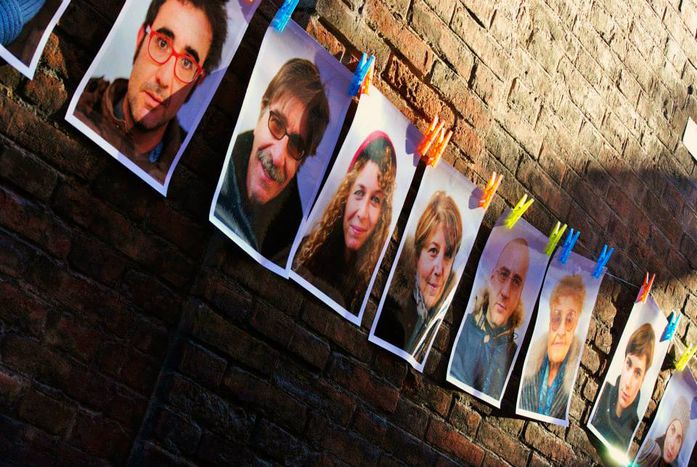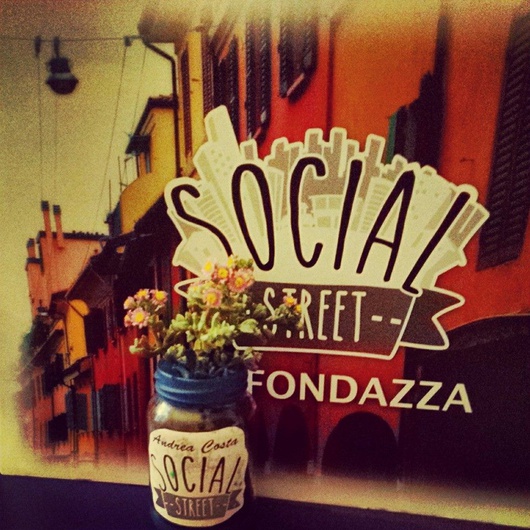
From social networks to social streets: the Roman experience
Published on
Translation by:
Abigail WatsonA journey among the Italian 'social streets', where the search for community is paving the way.
In Italian cities, the desire for community is emerging ever stronger. Until a few years ago, several factors set the metropolis apart from the small provincial town: the feeling of 'anonymity'; the hectic rhythm; relationships marked by superficiality; difficulties in maintaining friendships due to distance; the indifference of neighbours...
But something has changed in recent years. The first small revolution got underway a decade ago, when the 'festa dei vicini', or 'neighbours festival' was established and promoted at a national and European level (European Neighbours Day), to this day still practiced and supported by some Italian municipalities. But why stop at neighbours? Why not extend this desire for community to the entire street?
And so social streets were born, a phenomenon which has been gradually growing over the last ten years in small and large cities alike. At its heart is the desire to overcome the constraints of individualism and share interests, passions and free time with those who live just down the road, conducting projects which draw upon common interests and lead to collective benefits.
How did social streets emerge in Italy?
It all began in Via Fondazza in Bologna, where the first social street experience was launched in 2013 with the introduction of a Facebook group called 'Residents of Via Fondazza- Bologna'. Officially, the creation of a social street takes a social network as a starting point, but this does not mean that relationships are limited to the virtual universe of the web; a social street causes you to go out and meet people. In this way, the web becomes a platform for tackling general issues linked to the street or quarter, as well as a 'bulletin board' for organising initiatives which allow people to interact to reach a common goal: a street party, a Christmas dinner, a market for exchanging furniture and small electrical appliances, a jumble sale, creating a communal vegetable garden, an urban regeneration operation, street cleaning, book crossing, etc.
The 'social street model' then spread like wildfire, until it arrived at a sort of 'census' or 'federation' of the over 200 Italian social streets at the site 'www.socialstreet.it'. The site is like a virtual piazza where every social street shares its own experience and the activities it is organising. Furthermore, all those interested in setting up a social street are able to consult the useful advice provided by the guidelines so that the experience has longevity and is constantly livened up with the participation of the majority of the residents. Social streets are not only a reality in large Italian cities such as Rome, Turin and Milan, but also in smaller towns such as Ferrara, Tricase, Finale Ligure, etc. People are also going crazy for the phenomenon abroad: we have heard of similar experiences in Slovenia, Portugal, New Zealand, Brazil and Chile.
It was inevitable that a phenomenon as pervasive as this would become the object of study: researchers and university students are watching these social dynamics with interest. Just take a look at the 'SocialMI' site.
In Rome there are over twenty of these streets in the most diverse areas of the city: from those traditionally more working-class areas such as via Gattamelata in Pigneto and Quadraro, to the more elite ones such as via Tripoli in the African Quarter (so called because of the names of the streets which recall the African campaigns of Mussolini, not after the proportion of foreigners which inhabit them) or Via degli Orti della Farnesina-Ponte Milvio. And, of course, it wouldn't be complete without a social street - or rather 'social square' - in the Capital's multiethnic quarter par excellence: Piazza Vittorio. The Facebook group ‘Residents of Piazza Vittorio’ is the virtual notice board for sharing urban renewal activities, highlighting cultural and social events happening in the quarter and launching initiatives for socialising. For example, 'i balli di piazza Vittorio' ('dances in piazza Vittorio') took root a few years ago as a regular event: from June to September, every other Tuesday, the most active members of this social street meet to move to the rhythm of popular Italian dances.
 The first months of 2014 also saw the birth of the two social streets in Via Tripoli and Via Pavia, neighbours in more than the geographical sense. After a launch based on leaflets, social networks and word of mouth, via Pavia quickly reached over 200 members, a goal which Via Tripoli also reserves the right to match, even thanks to a kind of 'twinning' between the two streets; why not? 'The aim of the social street is to take back spaces which already belong to us, in a civil movement', explains Barbara, who is in charge of Via Pavia's Facebook page (and a lot more besides!) 'The desire to not feel alone, to not live passively, is very strong, and in order to reach these goals it is right to involve local institutions as well.'
The first months of 2014 also saw the birth of the two social streets in Via Tripoli and Via Pavia, neighbours in more than the geographical sense. After a launch based on leaflets, social networks and word of mouth, via Pavia quickly reached over 200 members, a goal which Via Tripoli also reserves the right to match, even thanks to a kind of 'twinning' between the two streets; why not? 'The aim of the social street is to take back spaces which already belong to us, in a civil movement', explains Barbara, who is in charge of Via Pavia's Facebook page (and a lot more besides!) 'The desire to not feel alone, to not live passively, is very strong, and in order to reach these goals it is right to involve local institutions as well.'
These simple principles give rise to an idea which is just as simple but also constructive: meet one another, get to know one another, and share. Politics is, for the most part, left out of the exchanges and collective encounters - people are more interested in practical matters relevant to the quarter - but these issues extend to art, literature, responsible energy usage and ecology. All participants - real or virtual - bring their own expertise to the table, sometimes taking it upon themselves to propose and carry out a project ad hoc to share with the other members of the group: in this way, book exchange initiatives are born, as well as discovery walks in the quarter and social meals accompanied by music which also provide the chance to spruce up the communal space hosting the event, thereby taking care of that which, sometimes, public administrations fail to do.
The social street of the African quarter has encountered a few major difficulties in involving the inhabitants of the quarter, as Silvia, the 'organiser' of Via Tripoli, explains, in terms of the number of ideas and proactive spirit: one of the reasons could be the type of person the area is home to: many old people and students living away from home due to the proximity of the university, entailing frequent change, or maybe it is even the urban layout of the quarter itself, which does not offer too many spatial opportunities for gathering. Even here, though, there are several proposals, from social meals to urban renewal activities in collaboration with the group Retake, to the more demanding, such as the redevelopment of the Villa Leopardi library and the reopening of the Africa cinema, closed for over ten years but with the potential to be converted into a symbol of the quarter, where old meets new.
Translated from Dai social network alle social street: le esperienze romane



